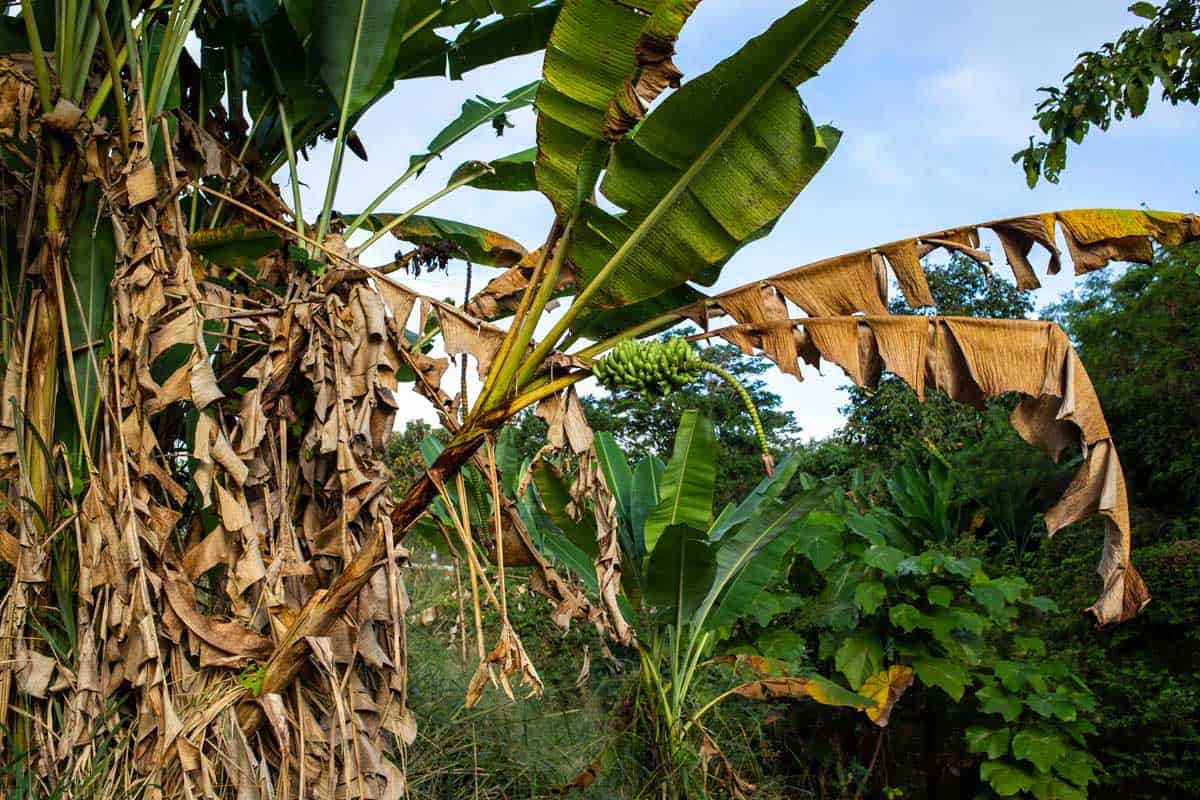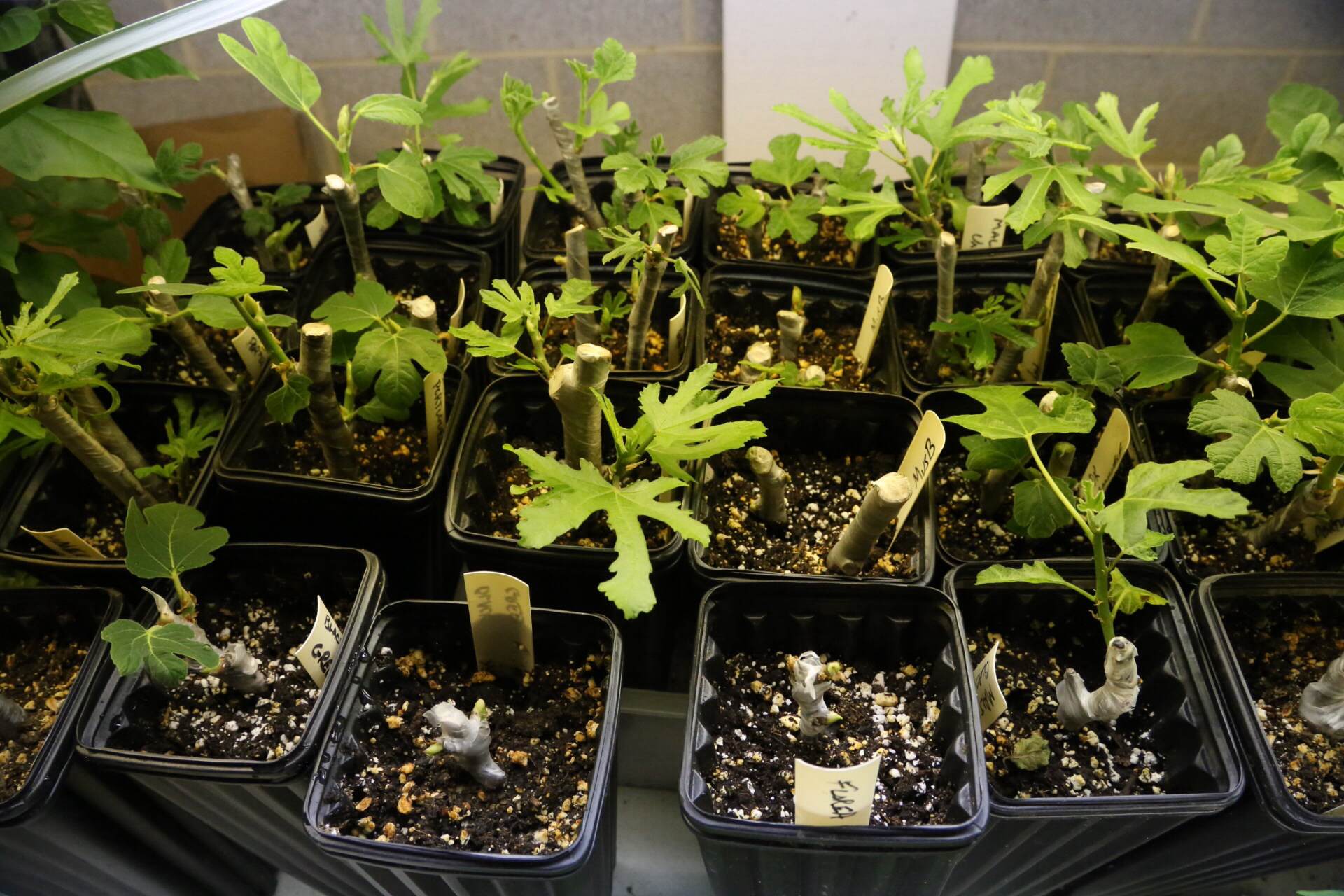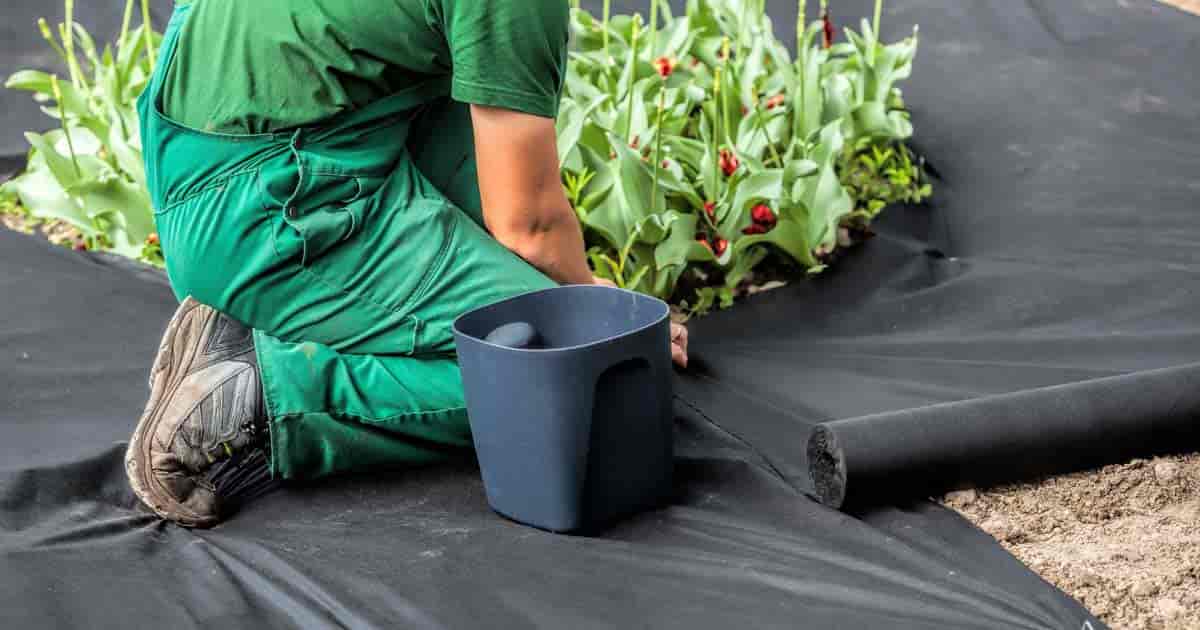Home>Gardening Techniques>Plant Care>How To Cut Trees Down


Plant Care
How To Cut Trees Down
Modified: January 22, 2024
Learn the best techniques for tree cutting with our comprehensive guide. Improve your plant care skills and safely remove trees with confidence.
(Many of the links in this article redirect to a specific reviewed product. Your purchase of these products through affiliate links helps to generate commission for Chicagolandgardening.com, at no extra cost. Learn more)
Table of Contents
Introduction
Taking care of trees is an essential part of maintaining a healthy and beautiful environment. However, there are instances when a tree needs to be removed due to various reasons such as disease, damage, or if it poses a threat to people or property. Tree removal can be a challenging task that requires careful planning, proper tools, and adherence to safety measures.
In this article, we will guide you through the process of cutting trees down efficiently and safely. We will cover everything from assessing the need for tree removal to disposing of the tree debris. Whether you are a homeowner looking to remove a small tree or a professional arborist handling larger trees, the information provided here will help you achieve successful results.
Removing a tree is not a decision that should be made lightly. It is important to assess the situation and determine if removal is necessary. Factors such as the tree’s health, location, and potential risks should all be taken into consideration. If you are unsure, it is recommended to consult with a certified arborist for expert advice.
Once you have established the need for tree removal, it is crucial to prepare for the task ahead. This includes obtaining any required permits, notifying neighbors if necessary, and ensuring you have the appropriate tools and equipment. Safety should always be the top priority when cutting down trees, so be sure to gather the necessary safety gear and seek assistance if needed.
Choosing the right tools and equipment for the job is vital for a successful tree removal. Depending on the size and type of tree, you may need a combination of chainsaws, pruning saws, ropes, and harnesses. It is crucial to have the proper knowledge and skills to operate these tools safely and effectively.
Before embarking on the tree cutting process, it is important to take adequate safety precautions. This includes creating a clear work area, removing any obstacles, and ensuring the area is free from bystanders. It is also advisable to have a clear plan of action for each cut, taking into consideration the direction of tree fall, potential hazards, and escape routes.
In the following sections of this article, we will explore various techniques for cutting trees down, including the notch and backcut method, as well as the use of felling wedges. We will also provide tips for safely removing cut trees from the work area and disposing of tree debris responsibly.
Removing a tree can be a challenging yet rewarding task. By following the proper steps and adhering to safety guidelines, you can successfully cut trees down and ensure the well-being of your property and those around you. Let’s dive into the specifics of assessing tree removal needs and preparing for the task at hand.
Assessing Tree Removal Needs
Assessing the need for tree removal is the first step in the process. It is essential to accurately evaluate the condition and potential risks associated with the tree to determine whether removal is necessary. Here are some key factors to consider when assessing tree removal needs:
1. Tree Health: Examine the overall health of the tree. Signs of decay, disease, or significant structural damage may indicate the need for removal. Look for dead or dying branches, fungal growth, cracks in the trunk, or leaning.
2. Location and Space: Consider the tree’s proximity to structures, power lines, roads, and other plants. If the tree poses a risk to surrounding objects or if it has outgrown the available space, removal may be necessary.
3. Potential Hazards: Identify potential hazards that the tree may pose. This could include weak branches that could fall and cause damage, a leaning trunk that may topple over, or roots that are damaging nearby infrastructure.
4. Tree Species: Different tree species have different characteristics and growth habits. Some trees are more prone to disease or have weak wood that is more susceptible to breakage. Understanding the specific traits of the tree species will help determine its risk factor.
5. Professional Opinion: If you are unsure of the tree’s condition or the risks involved, consult with a certified arborist. They have the expertise to assess tree health, identify potential hazards, and provide professional advice on whether removal is necessary.
Remember, tree removal should be a last resort. It is important to consider alternative solutions such as pruning, bracing, or cabling if the tree can be saved. Trees provide numerous benefits to the environment, including shade, improved air quality, and habitat for wildlife. Removing a tree should only be done when absolutely necessary for safety or property reasons.
Once you have assessed the need for tree removal and determined that it is necessary, the next step is preparing for the task. This involves obtaining any required permits, notifying neighbors if required, and gathering the necessary tools and equipment. In the following sections, we will delve deeper into the preparations needed for a successful tree removal.
Preparing for Tree Removal
Before embarking on the tree removal process, proper preparation is essential to ensure a safe and efficient operation. Taking the time to prepare adequately will minimize risks and help you accomplish the task effectively. Here are some key steps to follow when preparing for tree removal:
1. Obtain Permits: Check with your local municipality or homeowner’s association to determine if you need any permits or permissions to remove the tree. Some areas may have specific regulations regarding tree removal, especially if the tree is located in a protected area or if it is a heritage tree.
2. Notify Neighbors: If the tree removal process may affect your neighbors’ properties (e.g., falling branches or potential disruptions), it is courteous to inform them beforehand. This will allow them to take necessary precautions and ensure a smooth operation without any surprises.
3. Assess the Tree’s Height and Girth: Before beginning the removal process, measure the height and girth of the tree. This information will help you determine the appropriate tools and equipment needed for the task.
4. Gather the Right Tools and Equipment: Depending on the size and species of the tree, you will need specific tools and equipment to cut it down safely. This may include chainsaws, pruning saws, ropes, harnesses, ladders, and wedges. Ensure that all equipment is in good working condition and that you have the necessary protective gear, such as gloves, goggles, and a hard hat.
5. Clear the Work Area: Before starting the cutting process, clear the area around the tree of any obstacles like rocks, debris, or other vegetation. This will provide a safe and unobstructed workspace. Keep in mind that falling trees can cause damage, so it is essential to create a safe perimeter around the tree.
6. Plan the Direction of the Tree’s Fall: Evaluate the surroundings and choose the direction in which the tree should fall. Consider factors such as obstacles, structures, and power lines. It is important to plan an escape route for yourself and any other workers involved.
7. Arrange for Assistance: Cutting and removing a tree can be a demanding task. If the tree is larger or the situation is complex, it is advisable to seek assistance from trained professionals or experienced individuals who can provide guidance and additional manpower.
By following these steps and adequately preparing for tree removal, you are setting yourself up for a smoother and safer operation. Proper planning and organization will contribute to a successful outcome. In the next section, we will discuss choosing the right tools and equipment for cutting trees down.
Choosing the Right Tools and Equipment
Selecting the appropriate tools and equipment is crucial for the safe and efficient removal of a tree. The size and type of the tree will determine the tools you need. Here are some essential tools and equipment to consider:
1. Chainsaw: A chainsaw is the primary tool for cutting down trees. Choose a chainsaw with the appropriate power and bar length for the size and type of tree you are working with. Make sure it is in good working condition, with sharp chains and proper tension.
2. Pruning Saw: A pruning saw is useful for removing smaller branches and limbs. It is especially handy for making precise cuts in tight spaces or areas that are difficult to reach with a chainsaw. Select a pruning saw with a comfortable grip and a sharp, sturdy blade.
3. Ladders and Climbing Gear: If the tree requires climbing, consider using a sturdy ladder or climbing gear such as tree spikes, climbing ropes, and harnesses. These tools can provide better stability and safety while working at heights.
4. Ropes and Winches: Ropes and winches are essential for controlling the direction of the tree’s fall. They can help guide the tree to the intended landing spot and minimize the risk of damage to surrounding structures. Choose high-quality ropes and winches that can handle the weight and force of the tree.
5. Wedges: Felling wedges, made of plastic or metal, are used to control the direction of the tree’s fall. They are placed in the backcut to prevent the tree from pinching the chainsaw or falling in an unintended direction. Having a selection of wedges in different sizes is advisable for various tree diameters.
6. Personal Protective Equipment (PPE): Ensure that you have the appropriate PPE to protect yourself during the tree removal process. This includes items such as safety glasses, ear protection, gloves, a hard hat, and sturdy work boots. PPE will help protect you from flying debris, noise, and other potential hazards.
7. First Aid Kit: Accidents can happen, so it is important to have a well-stocked first aid kit on hand. Be prepared for minor injuries such as cuts, scrapes, and sprains. In a more severe situation, having a means to communicate and call for professional medical assistance is essential.
When choosing tools and equipment, consider their quality, durability, and suitability for the specific task at hand. It is also important to ensure you have the necessary knowledge and skills to operate the tools safely. If you are unsure of how to use a particular tool, consult the manufacturer’s instructions or seek guidance from an experienced professional.
In the next section, we will cover important safety precautions to keep in mind while cutting trees down to prevent accidents and injuries.
Safety Precautions for Tree Cutting
Tree cutting can be a hazardous task, and prioritizing safety is paramount to avoid accidents or injuries. Whether you are a professional arborist or a homeowner removing a tree, follow these essential safety precautions:
1. Personal Protective Equipment (PPE): Always wear the appropriate PPE to protect yourself from potential hazards. This includes a hard hat to protect against falling branches or objects, safety glasses to shield your eyes from debris, ear protection to minimize noise exposure, gloves to maintain a firm grip on tools, and sturdy work boots with non-slip soles for stability.
2. Assess the Work Area: Before starting any cutting, thoroughly assess the work area. Remove any obstacles such as rocks, furniture, or other vegetation to create a clear workspace. Keep bystanders and pets well away from the area to prevent accidents.
3. Clear Escape Routes: Identify and mark clear escape routes in case of unexpected tree movement or other hazards. Plan at least two escape routes and ensure they are clear of obstructions.
4. Use Fall Protection: If you are working at heights or using climbing gear, always use appropriate fall protection equipment such as harnesses and safety ropes. Secure the equipment to a stable anchor point to prevent falls.
5. Maintain a Safe Distance: Keep a safe distance from the tree being cut down, especially during the final stages of felling. Pay close attention to the tree’s movement and be prepared to move quickly if necessary.
6. Proper Chainsaw Handling: Handle the chainsaw with care and follow the manufacturer’s instructions. Keep both hands on the chainsaw at all times and refuel it only when the engine is off and cool. Maintain proper tension and sharpness of the chainsaw blade to ensure safe and efficient cutting.
7. Buddy System: When possible, work with a partner who can assist you and keep an eye on the surrounding area for potential hazards. Maintain clear communication throughout the tree cutting process.
8. Be Aware of Power Lines: Take extra precautions when cutting trees near power lines. Always assume that the power lines are live and maintain a safe distance. If the tree is in close proximity to power lines, contact a professional tree service or utility company to handle the removal.
9. Keep an Eye on the Weather: Avoid cutting trees during inclement weather conditions such as high winds, storms, or heavy rain. Unstable weather can make the tree more unpredictable and increase the risk of accidents.
It is important to prioritize safety at all times during tree cutting. If you are unsure of how to safely and effectively remove a tree, consider hiring a professional arborist with the expertise and experience to handle the task safely.
In the next section, we will explore different techniques for cutting down trees, providing insights on the notch and backcut method, as well as the use of felling wedges.
Techniques for Cutting Trees Down
Cutting down a tree involves using proper techniques to ensure controlled and safe removal. Here are two commonly used methods: the notch and backcut method, and the use of felling wedges.
1. Notch and Backcut Method:
– Step 1: Start by making a notch on the side of the tree where you want it to fall. The notch should be a 70-degree angle cut, with the horizontal cut at the bottom and the top cut meeting the bottom cut, creating a notch or “V” shape.
– Step 2: Make the horizontal cut at the base of the notch, ensuring it is level and meets the notch’s bottom cut.
– Step 3: Move to the opposite side of the tree and make a backcut a few inches above the horizontal cut on the notch side. The backcut should be slightly higher than the notch’s horizontal cut.
– Step 4: As you make the backcut, the tree will begin to lean and eventually fall in the desired direction. Make sure you have a clear escape route and maintain a safe distance.
2. Use of Felling Wedges:
– Step 1: After making the notch, insert felling wedges on either side of the notch. These wedges help control the tree’s fall by preventing the trunk from closing in on the chainsaw or deviating from the intended direction.
– Step 2: As you make the backcut, the wedges will apply pressure, keeping the cut open and guiding the tree’s fall.
– Step 3: Once the tree starts to fall, remove the chainsaw and retreat along your predetermined escape route.
When using these techniques, it is important to consider the size, weight, and condition of the tree. For larger trees or those with potential hazards, it may be best to seek professional help to ensure safe and effective removal.
Remember, tree cutting can be dangerous, and it is important to have a clear plan, proper equipment, and sufficient knowledge and experience to carry out the task safely. If you are unsure or uncomfortable with any aspect of tree cutting, it is always best to consult with a professional arborist.
In the next section, we will discuss the safe and proper methods for removing cut trees from the work area and the responsible disposal of tree debris.
Removing Cut Trees Safely
Once a tree has been cut down, it is essential to remove it from the work area safely and efficiently. Here are some important steps to follow when removing cut trees:
1. Assess the Surroundings: Before moving the cut tree, evaluate the area for any obstacles, including other trees, structures, fences, or power lines. Clear the path to ensure a smooth and safe removal process.
2. Use Equipment and Rigging: Depending on the size and weight of the tree, use appropriate equipment and rigging techniques to remove it. This could include using ropes, pulleys, or even heavy machinery like cranes or loaders if necessary. Ensure that all equipment is in good working condition and operated by trained professionals.
3. Work in Sections: If the tree is large or has extensive branches, it may be necessary to cut it into manageable sections for easier removal. Use chainsaws or pruning saws to cut the tree trunk and branches into smaller pieces that can be safely moved.
4. Maintain Control: As you remove sections of the tree, ensure that you have proper control over each piece. Use ropes or rigging systems to guide the tree sections safely while preventing them from swinging or falling uncontrollably.
5. Work as a Team: Removing cut trees can be physically demanding and potentially dangerous. Engage the help of others to safely handle and transport sections of the tree. Communicate effectively to maintain coordination and ensure the safety of everyone involved.
6. Clear the Work Area: As each section of the tree is removed, clear away debris and branches from the work area to prevent tripping hazards or obstruction of equipment. This will create a safer environment and facilitate the efficient removal of subsequent sections.
7. Dispose of the Tree Debris Properly: Once the tree has been fully removed, properly dispose of the debris. Consider recycling options, such as chipping the branches for mulch or using the wood for firewood if applicable. If you are unable to dispose of the debris yourself, contact local waste management or a tree removal service for assistance.
Remember, removing cut trees can be a complex process that requires appropriate equipment, skills, and teamwork. It is essential to prioritize safety and take necessary precautions to prevent accidents or injuries. If you are unsure about any aspect of removing a cut tree, consider consulting with a professional tree removal service for expert advice and assistance.
In the next section, we will address the responsible disposal of tree debris and highlight the importance of environmental stewardship in plant care.
Disposing of Tree Debris
Proper disposal of tree debris is an essential part of the tree cutting process. Knowing how to dispose of the debris responsibly not only ensures a clean and tidy work area but also promotes environmental stewardship. Here are some options for disposing of tree debris:
1. Mulching: One eco-friendly option is to convert the tree branches and smaller wood pieces into mulch. Mulching not only helps to recycle the organic material but also provides valuable nutrients to plants and helps retain moisture in the soil. Use a wood chipper or hire a professional service to chip the branches into mulch that can be used in your garden, flower beds, or as a landscaping material.
2. Composting: If you have a compost pile or bin, you can add the smaller tree debris, such as leaves and smaller branches, to your compost. Remember to cut the branches into smaller pieces to accelerate the decomposition process. Over time, the organic material will break down and become a nutrient-rich compost that can be used as soil amendment in your garden.
3. Recycling: Some municipalities offer tree debris recycling programs where you can drop off the branches and larger wood pieces. The collected debris is then processed into useful products such as wood chips for landscaping or biomass fuel for energy production. Check with your local waste management or environmental agencies to find out if tree debris recycling is available in your area.
4. Yard Waste Collection: If your community has a yard waste collection program, you can follow the guidelines for bundling or bagging the cut tree branches and schedule a pickup. Make sure to comply with any size or weight restrictions imposed by the waste management service.
5. Professional Tree Removal Services: If the quantity of tree debris is substantial or the branches are too large to handle on your own, consider hiring a professional tree removal service. They have the equipment and expertise to safely handle, remove, and dispose of the debris while adhering to local regulations and environmental guidelines.
It is important to check with your local municipality or waste management service for specific guidelines on tree debris disposal. Some areas may have designated drop-off locations or curbside collection schedules for yard waste.
By responsibly disposing of tree debris, you contribute to environmental sustainability and promote the reuse or recycling of organic materials. Take advantage of eco-friendly options such as mulching or composting whenever possible. If you are unsure about the best method of disposal, consult with a professional tree removal service or contact your local waste management agency for guidance.
In the final section, we will summarize the key points discussed in this article to provide a comprehensive overview of cutting trees down and the importance of proper plant care practices.
Conclusion
Maintaining and caring for trees is crucial for creating a healthy and beautiful environment. However, there are instances when tree removal becomes necessary due to various factors such as disease, damage, or safety concerns. Cutting down a tree can be a complex and potentially dangerous task that requires proper planning, safety precautions, and the right tools and equipment.
In this article, we have provided a comprehensive guide to cutting trees down safely and efficiently. We emphasized the importance of assessing the need for tree removal and considering alternatives whenever possible. We discussed the steps involved in preparing for tree removal, including obtaining permits, notifying neighbors, and gathering the necessary tools and equipment.
Safety is paramount when cutting down trees, and we highlighted the importance of personal protective equipment, assessing the work area, and maintaining control over the cutting process. We explored different techniques such as the notch and backcut method, and the use of felling wedges to guide the tree’s fall in the desired direction.
Once a tree has been cut down, we emphasized the importance of removing it from the work area safely. We discussed techniques for removing cut trees, including working in sections, using equipment and rigging, and maintaining a clear workspace to prevent accidents.
Proper disposal of tree debris is also crucial for environmental stewardship. We highlighted options such as mulching, composting, recycling, and utilizing yard waste collection programs. By responsibly disposing of tree debris, we contribute to sustainability and reduce waste.
Remember, if you are unsure about any aspect of tree removal or if the tree poses significant risks, it is always best to consult with a certified arborist or professional tree removal service. Their expertise and experience will ensure the safe and efficient removal of the tree.
In conclusion, cutting trees down requires careful planning, adherence to safety protocols, and the use of proper techniques and equipment. By following the guidelines provided in this article, you can effectively remove trees when necessary while promoting a safe and well-maintained environment. Whether you are a homeowner or a professional arborist, the knowledge and skills acquired in this article will help you handle tree removal with confidence and achieve successful outcomes.







